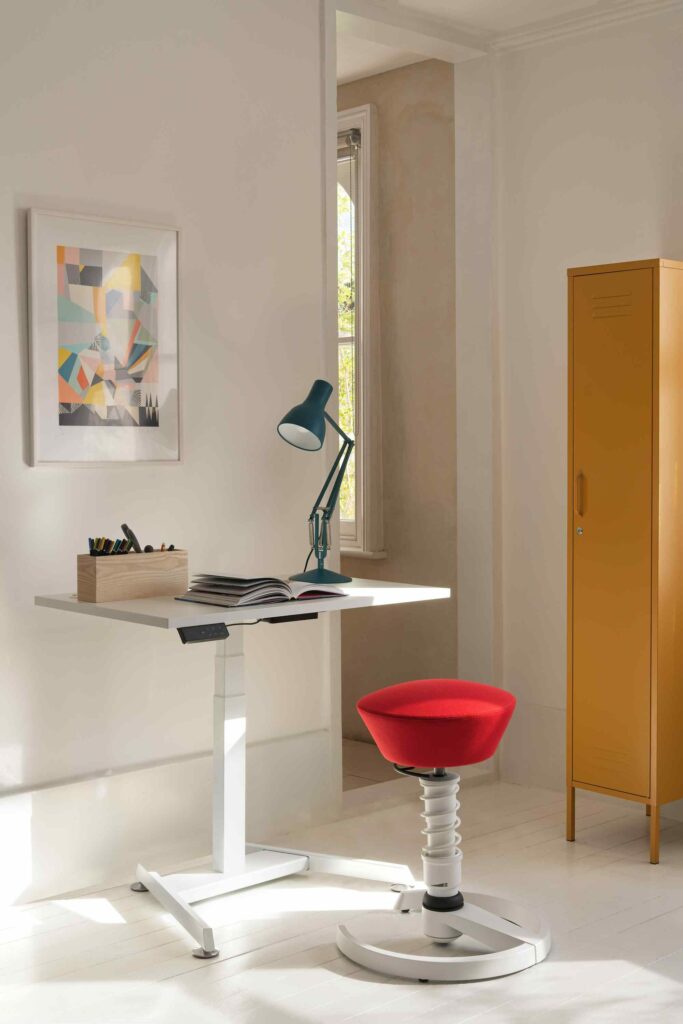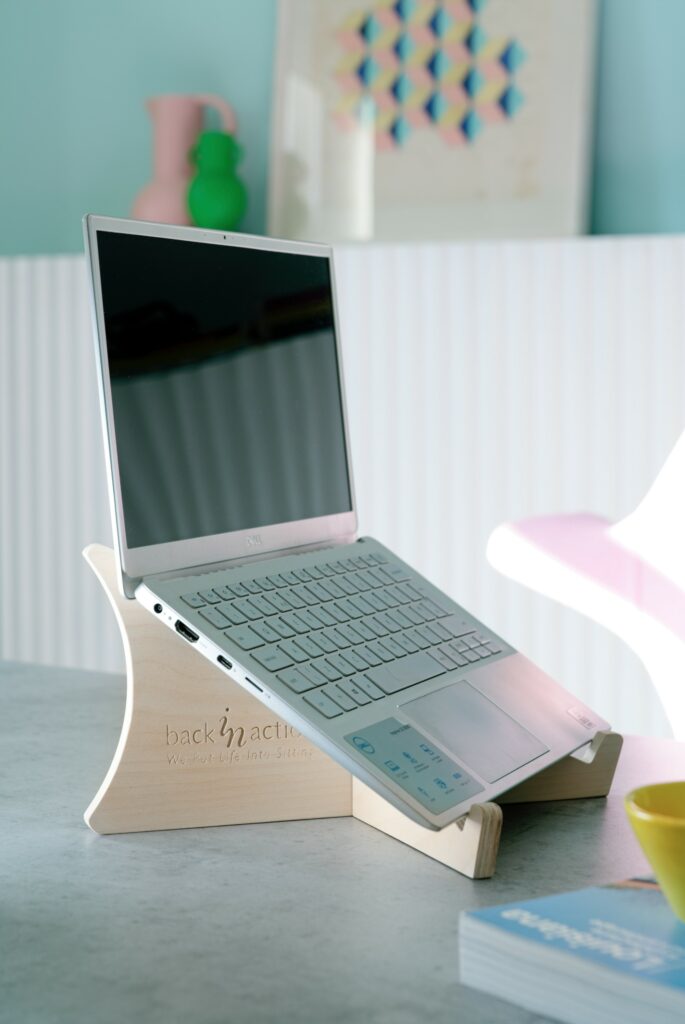By Lucinda Newbound – Senior Ergonomics Adviser, Back in Action
In the fast-paced world of modern work, success is often associated with productivity, efficiency, and innovation. We tirelessly seek out the latest tools, techniques, and strategies to optimize our performance and achieve our goals. Yet, amidst the frenzy of deadlines and deliverables, there’s one often-overlooked secret weapon that can profoundly impact our professional journey: good posture.
Picture this: you’re at your desk, engrossed in a project, the hours slipping by unnoticed. But as the day wears on, you begin to feel a familiar ache creeping into your lower back, your shoulders hunching forward, and your neck stiffening with every keystroke. Sound familiar? You’re not alone. Poor posture is a silent saboteur, quietly wreaking havoc on our bodies, undermining our potential for success in ways we may not even realize.

TIP ONE
The adage of “sit up straight” doesn’t work with modern computers and our excessively sedentary lifestyle. Nor does the other adage of “keep your back supported”. Forcing your body to sit straight and upright causes your body to be static. Instead engage your core, tilt yourself forwards, balance and above all else make sure to keep moving.
TIP TWO
Make it a priority to keep your back and core muscles strong. Building these up will keep your back healthy in the long run.
TIP THREE
If you’re someone that does laps around the office when on calls, it’s worth considering an electric sit-stand desk. Giving you the freedom to switch up how you work and avoid chair fatigue. Sit-stand desks are a smart move for productivity and your health, introducing the extra movement into your work will benefit your overall fitness and can help to burn a few extra calories without hitting the gym!

TIP FOUR
Desk chairs that are too soft will encourage you to slump or sit in a curled position. At Back in Action, we avoid anything that can ‘hammock’ over time such as a mesh seat. We know that a chair should be supported by something firm, such as high-quality foam, or padded wood. With the right support, you’ll avoid your hips rolling backwards and creating the dreaded slump that we are all susceptible to in the wrong chairs.
TIP FIVE
Encourage your spine’s natural ‘S’ shape by choosing a chair without a back rest. A stool or balance ball will mean that your body has to rely on self-support, your core and back muscles will be engaged, and your spine will naturally sway, gaining gentle movement throughout the time that you sit. One of our favourite stools is the Aeris Swopper which bounces on an adjustable spring and moves with the user in every direction.
TOP SIX
Get your spine stacked and balanced – that means spending some of your day at least away from your backrest, with your hips tilted upright. An easy trick? Pop a cushion under the back of your bottom. This makeshift wedge will tip your hips forward into an upright position and allow your spine to naturally align.

TIP SEVEN
When working from your desk, set your desk and chair so that your upper arms hang loosely straight down. Your elbows should be at 90 degrees and level with your table height. Lean forward from the hip joint to get your shoulders over the table and allow your elbows to support you some of the time with your back still lengthened.
TIP EIGHT
If you’re someone that does laps around the office when on calls, it’s worth considering an electric sit-stand desk. Giving you the freedom to switch up how you work and avoid chair fatigue, sit-stand desks are a smart move for productivity and your health. Introducing the extra movement into your work will benefit your overall fitness and can help to burn a few extra calories without hitting the gym!
TIP NINE
If you touch type, set your screen high with the addition of anything from a computer monitor raiser to a stack of books, but if you “hunt and peck” on the keyboard, set the screen low (you’ll be looking down any way, so it decreases neck strain).
TIP TEN
No matter how comfortable you are in your desk chair, static, prolonged sitting is not good for your spine generally. Make time to stretch your arms and walk around for at least 2 minutes every 30-45 minutes.
Genuine ergonomic furniture can make a huge difference to spinal health and comfort, so, what should you actually look for? Let’s delve into the key aspects:
Dynamic Movement
Back in Action firmly believes that movement is paramount to ergonomic design. Static postures can lead to discomfort and fatigue over time. Therefore, it’s important to look for furniture that encourages dynamic movement, allowing you to shift, sway, and adjust your position effortlessly such as the Varier Variable or Aeris Swopper. Features such as swivel seats, tilting mechanisms, and flexible backrests promote natural movement, reducing the risk of musculoskeletal issues.
Adjustability
True ergonomic furniture should offer a high degree of adjustability to accommodate individual preferences and body dimensions. Look for chairs with adjustable seat height, depth, and tilt angle, as well as lumbar support that can be customised to suit your unique needs. Tables and desks should also be adjustable in height to promote proper alignment and reduce strain on the neck and shoulders.
Supportive Structure
While comfort is undoubtedly important, ergonomic furniture should prioritise support over aesthetics (though ergonomic furniture is often striking too). Look for chairs and seating solutions with firm, contoured cushions that provide adequate support to the spine and pelvis. The backrest should follow the natural curvature of the spine, promoting healthy posture and minimising pressure points.
Quality Construction
Investing in high-quality, durable furniture is essential for long-term ergonomic benefits. Look for products that are built to last, with sturdy frames and reliable mechanisms. Back in Action only stocks furniture which is meticulously crafted using premium materials and innovative engineering techniques to ensure superior performance and longevity. Quality ergonomic furniture won’t start having issues within months.
Overall, the true essence of ergonomics lies in promoting movement, rather than static postures. When choosing furniture, prioritise dynamic movement, adjustability, supportive structure, breathable materials, and quality construction. By focusing on these key aspects, you can ensure that your furniture truly enhances comfort, promotes wellbeing, and supports your overall health.
Ready to take your posture game to the next level?
For more expert tips, practical advice, and products, head to Back in Action’s website!